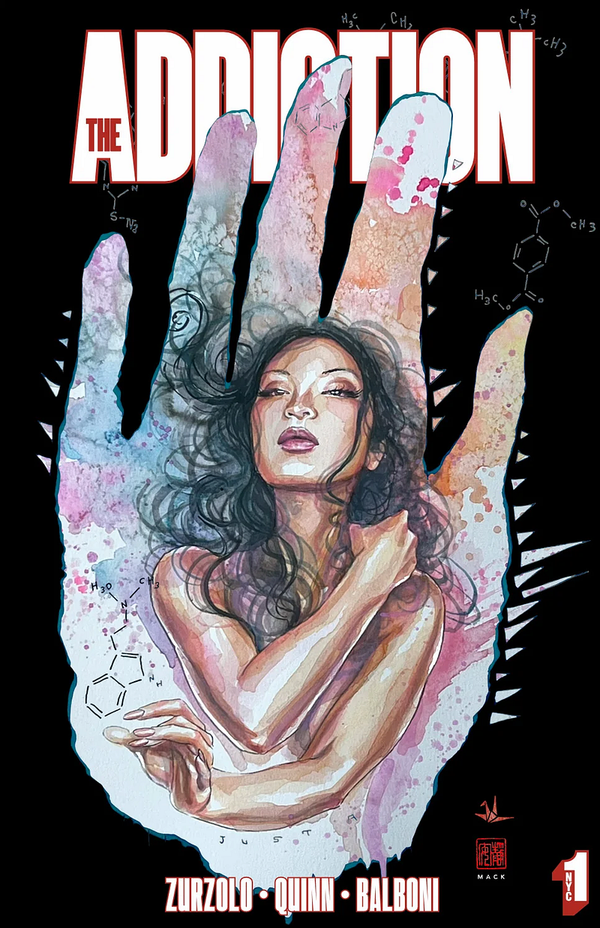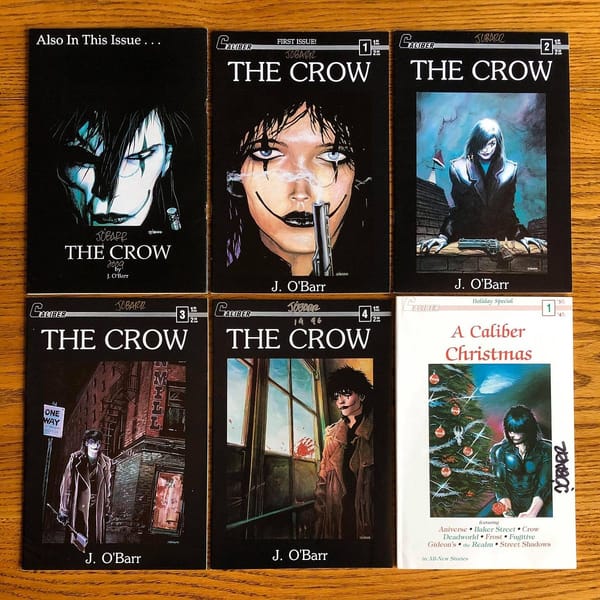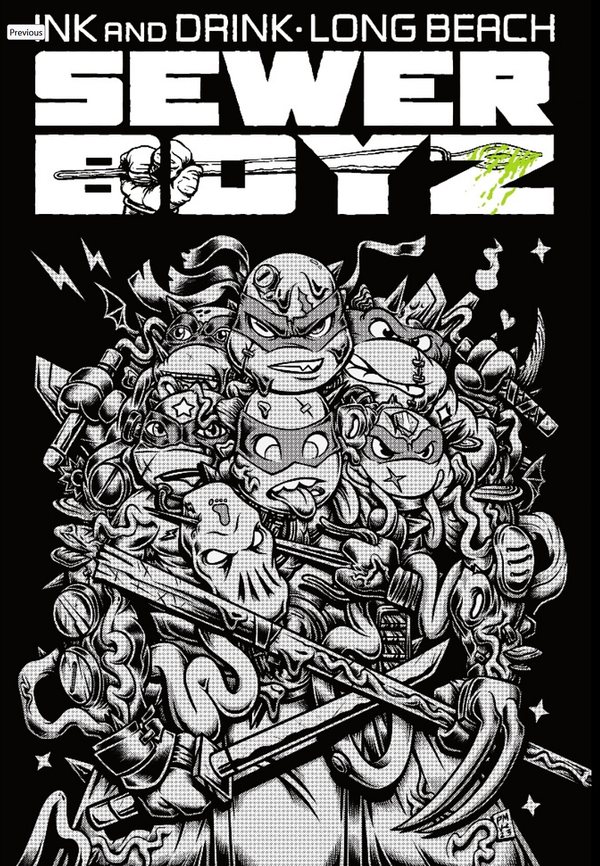Best Comics Imprint You’ve Never Heard Of: Homegrown Studios
Continuity Studios. The Studio. Homage Studios. Extreme Studios. Gaijin Studios. These are near-legendary agglomerations of talent that…
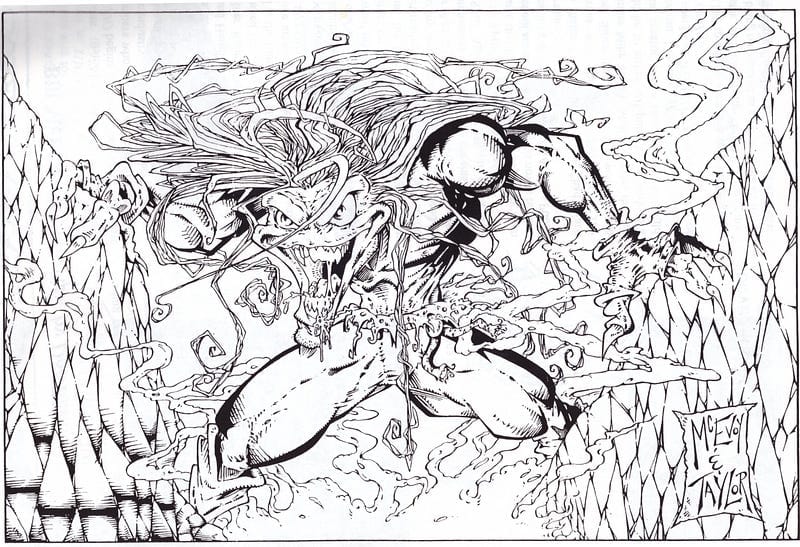
Continuity Studios. The Studio. Homage Studios. Extreme Studios. Gaijin Studios. These are near-legendary agglomerations of talent that comics fans will remember forever.
The short-lived Homegrown Studios should have been on that list, if only they’d gotten more of a chance to show off their work before the mid-90s comics market crash. They published a small number of works before dispersing, never quite making a mark outside of a small number of dedicated fans like me.
The main members were artists Bill McEvoy, Caleb Salstrom (aka Kaleb aka Cabin Boy), and Mike Taylor. “We called Caleb ‘Cabin Boy’ because he lived in a cabin up in the woods in Humboldt. And cause he sort of reminded me of Chris Elliott,” Taylor says. Several other people were involved Homegrown Studios projects as well, including writer Chad Michael Ward and artists Ken Bustamonte and Brian Jameson.
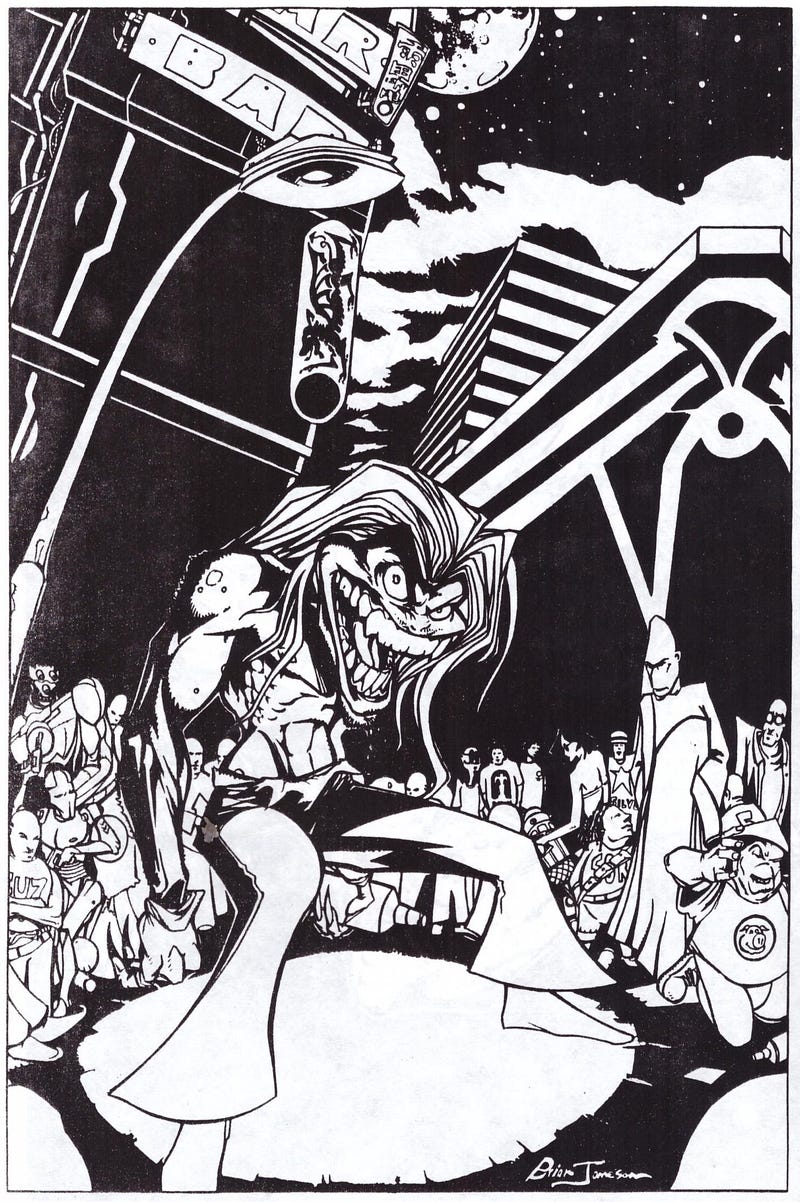
McEvoy typically penciled with Taylor and Salstrom providing inks. The Homegrown crew drew vibrant, cartoony work that was distinct yet very much of its time. They had a style that could perhaps be described as Todd McFarlene meets Vaughn Bode, though Sam Kieth and Simon Bisley were other obvious influences. Boof and the Bruise Crew artist John Cleary and CreeD artist Trent Kaniuga are the most obvious comparisons from that era of comics. It’s a style that sort of went out of fashion by the late 90s as manga eclipsed the Image founders (and their key influences, Art Adams and Michael Golden) as the main inspirations for mainstream comics art.
At any rate, their work represents a particular moment in comics that I remember fondly.
Early Daze
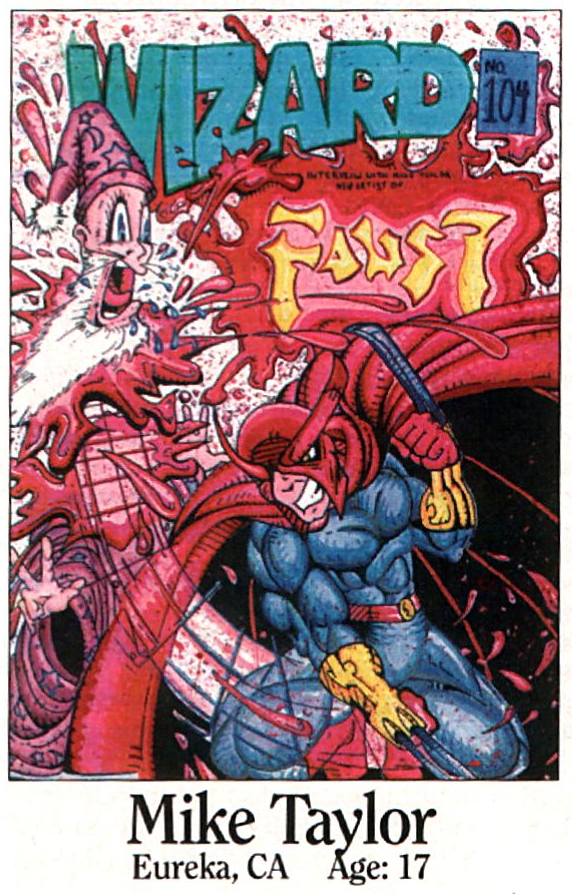
Homegrown Studios’s origins date back to the early 90s, when Taylor and Salstrom met in a high school art class in Eureka, California. By 1993, both had landed fan art in Wizard magazine, the biggest comics publication of the time. McEvoy landed work there as well.
That year, the Amateur Creator’s Union, an organization dedicated to helping up-and-coming comic book creators network and promote their work, launched. McEvoy, Salstrom, and Ward were members and met through the organization’s newsletter Portfolio.
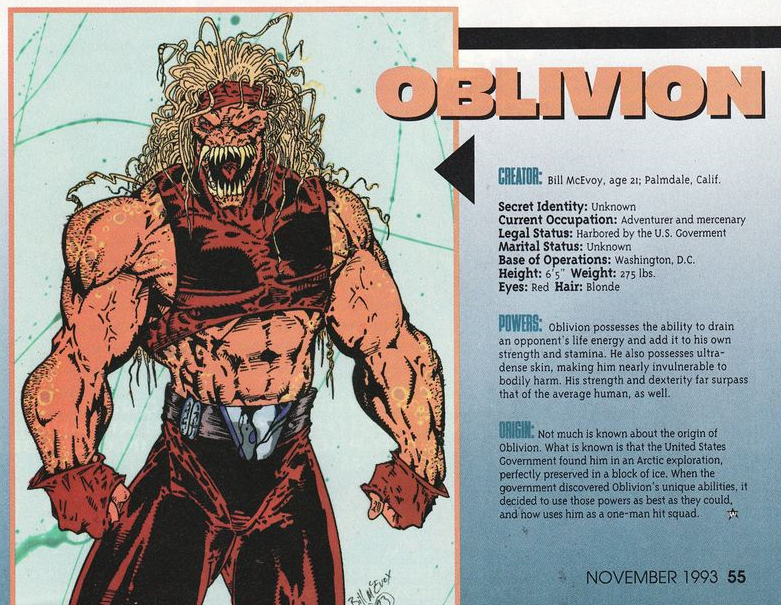
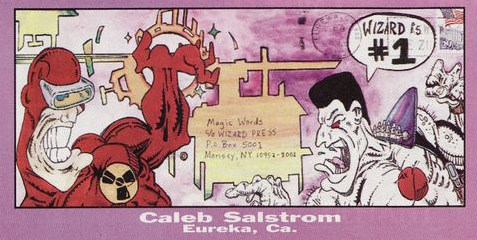
McEvoy lived near Los Angeles, where he taught animation at a high school. “I would send Kaleb drawings and comics pages and he would ink them and send them back,” McEvoy says. “It was pre-internet so there was a lot of post office going on.”
That period proved formative for Salstrom. “Kaleb was getting people to send him penciled pages for him to practice inking on,” Taylor says. “He was getting good fast. I showed him the basics of quill inking and he had better line control than me.”
Soon, Saltrom, Taylor, and McEvoy were referring to themselves as “Homegrown Studios,” along with a few others, including Ken Bustamante who McEvoy knew from his teaching job. McEvoy and Taylor agree that Salstrom came up with the name. “It was kind of a play on Homage studios,” Taylor says.
The Union
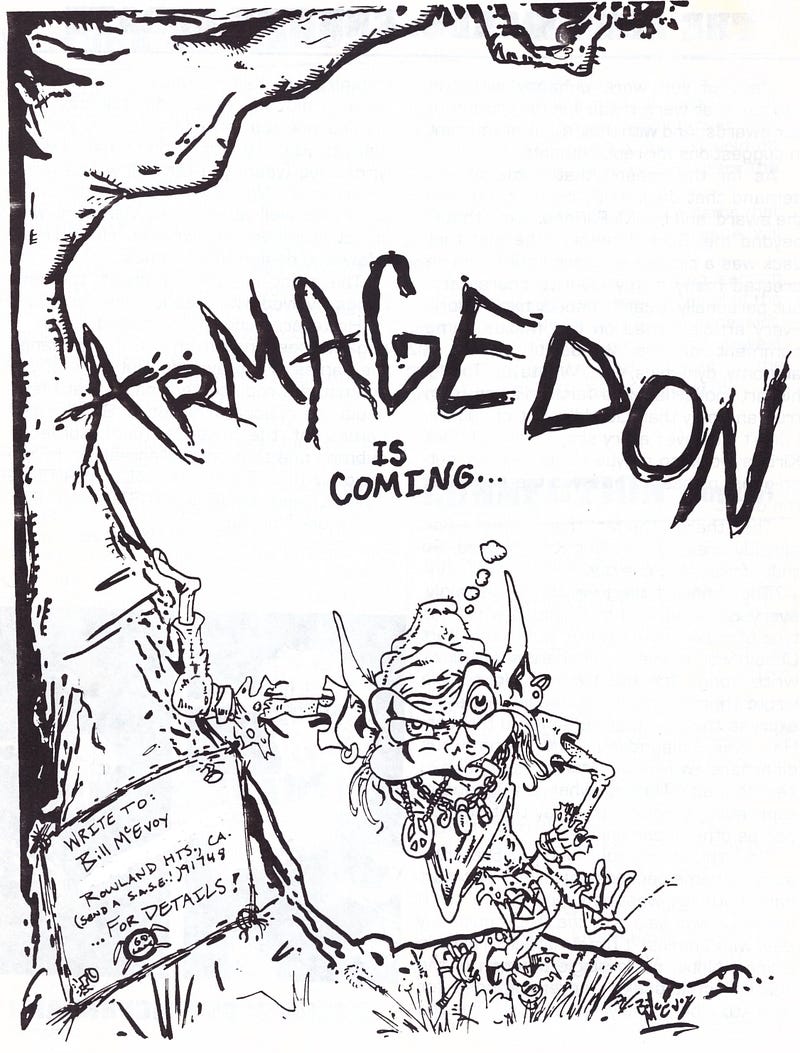
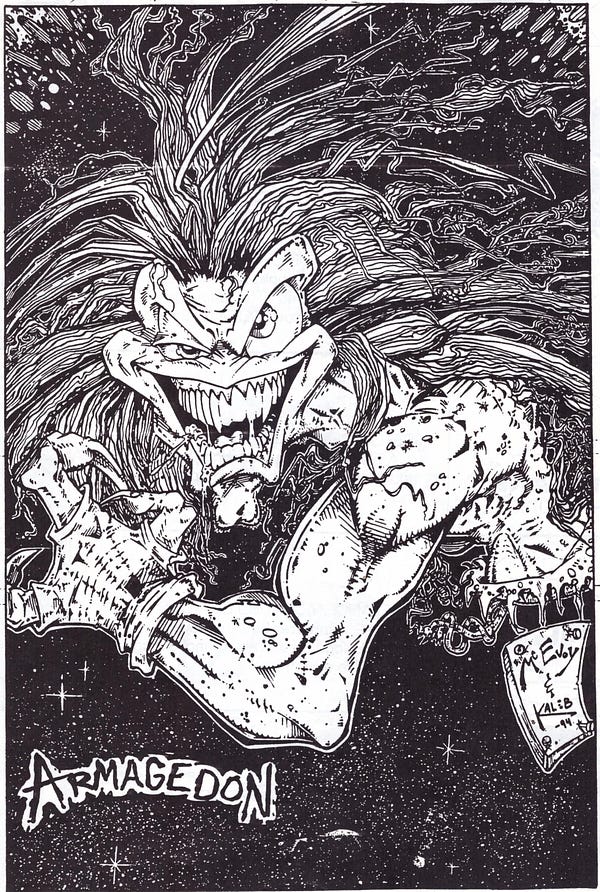
The team teased Homegrown Studios with a pair of splash pages with the ominous teaser “Armagedon is Coming” in Portfolio # 5 in Spring 1994 and followed that with a recruitment ad in # 6 that I think is the first public use of the Homegrown name.
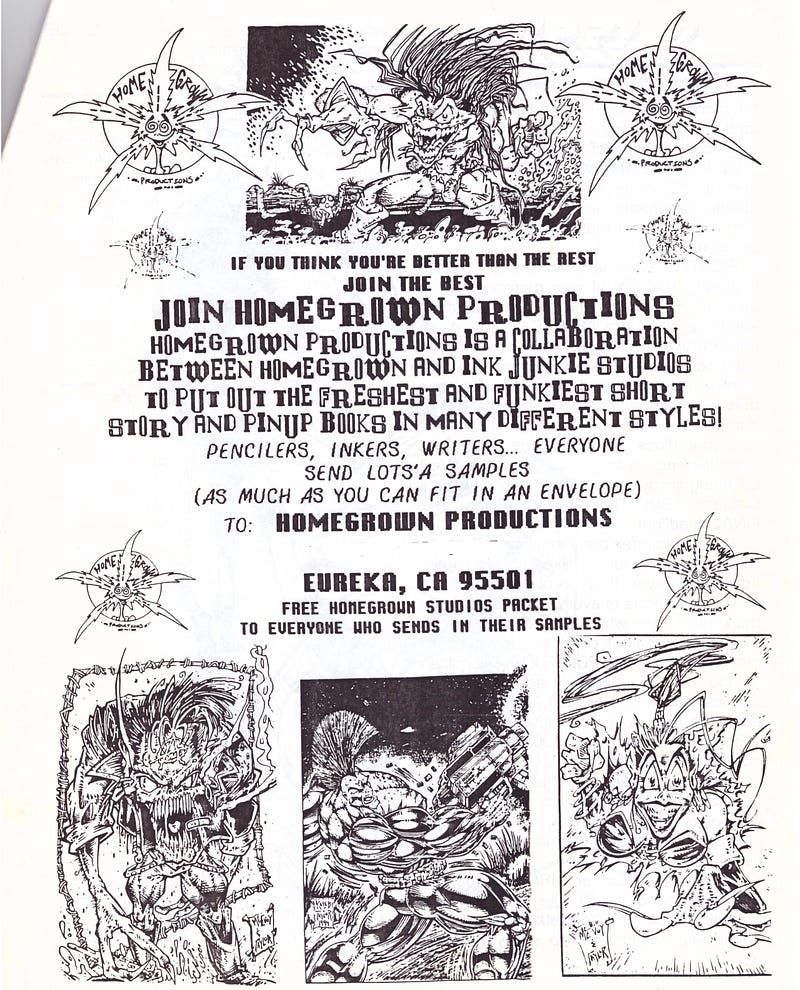
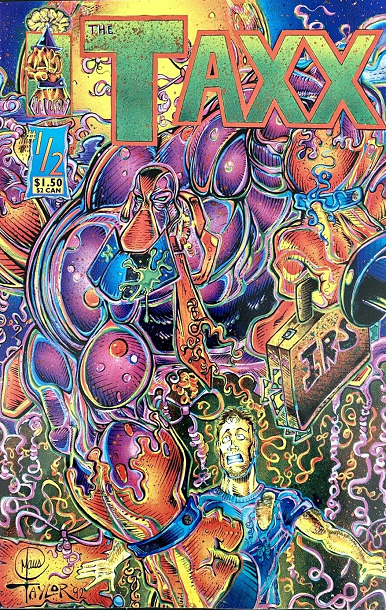
Taylor, meanwhile, was busy breaking into the comics industry. His first professional work was for Parody Press, founded by Eureka resident Don Chin, co-creator of Adolescent Radioactive Black Belt Hamsters (one of the few Ninja Turtles parodies with any staying power). “I interviewed him for a career class and then sort of never stopped bugging him,” Taylor says. “He worked at a copy shop and used to let me make Xeroxs of his original art collection.”
Taylor started with pinups and soon graduated to drawing Taxx, a parody of former Black Belt Hamsters artist Sam Kieth’s iconic Maxx character. “I was pushing hard at being a Simon Bisley/Sam Kieth clone,” Taylor says. Taxx opened the door for Taylor to try out as inker on the real thing. “I spent 10 days staying at Sam’s house inking pages,” Taylor says. “But I didn’t get the job.”
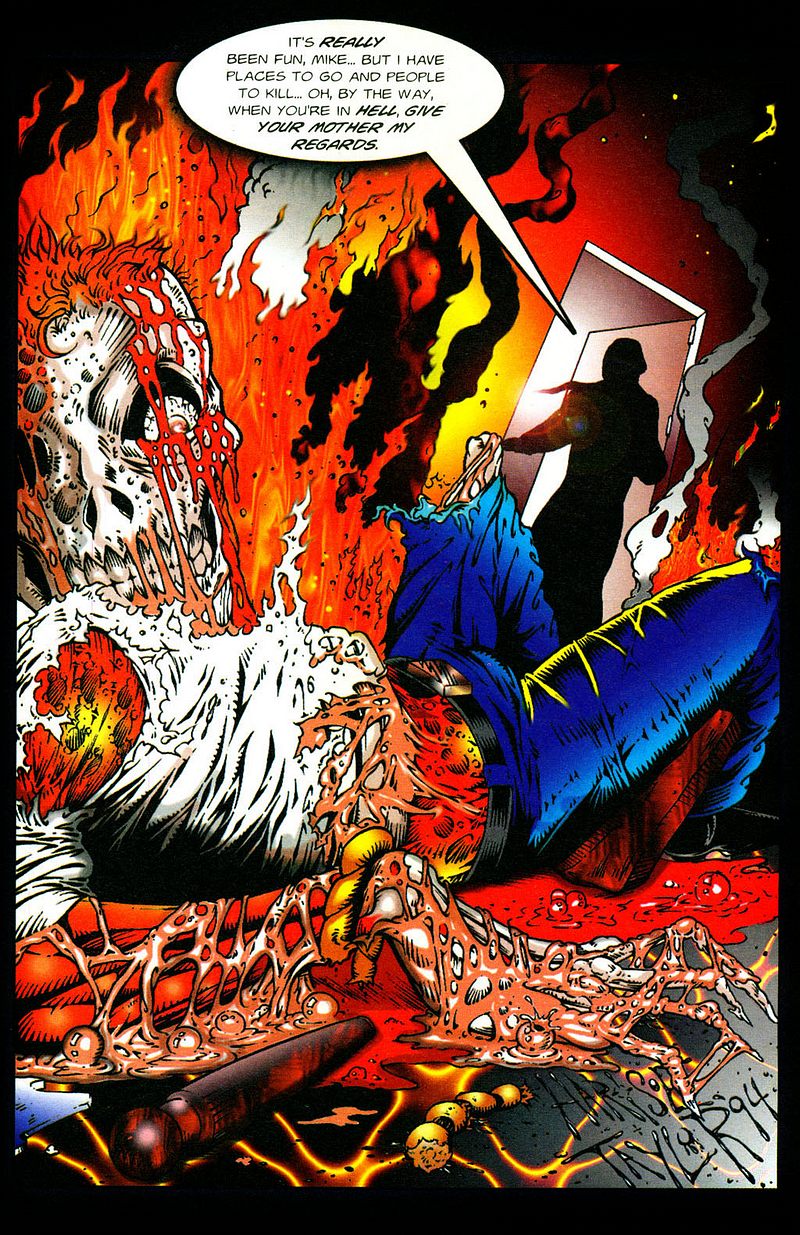
He kept working for Chin, inking an issue Zen the Intergalactic Ninja for his non-parody label, Entity Comics. “But it wasn’t what I wanted to do,” Taylor explains. “I always wanted to do gritty stuff but with a cartoony style. So I Faxed Everett Hartsoe at London Night Studios after I saw an issue he drew that Tim Tyler inked and I told him I wanted to be his inker.”
Taylor flew out to North Carolina and started work first on the black and white Razor series and then 1995’s Razor: Burn mini-series, London Night’s full-color debut.
Salstrom soon landed inking work at small publishers like Entity, Lightning, and Samson, often working with fellow Amateur Creators Union members penciler Ale Garza and writer Chad Michael Ward.
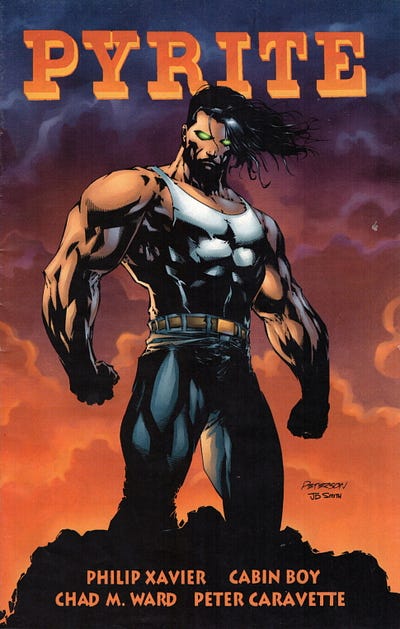
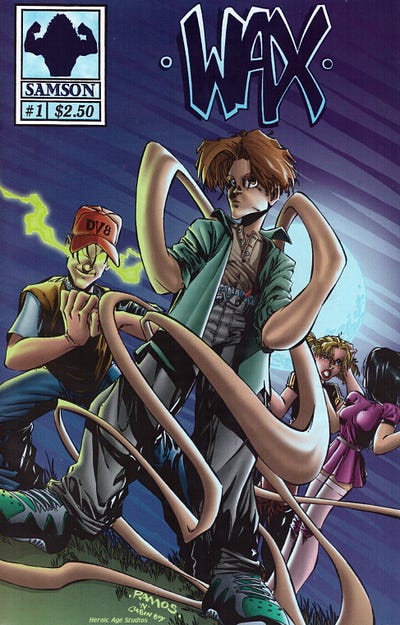
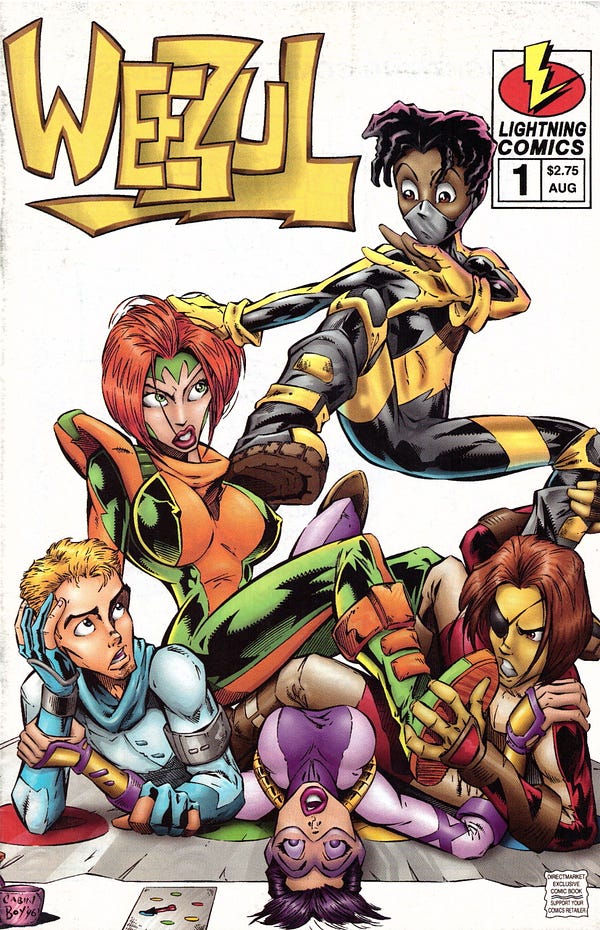
Ward also edited and published an anthology called Mosiac through his own Oktober Black publishing company. The debut issue featured a story called “Gun Metal Grey” written by Ward, penciled by McEvoy, and inked by Salstrom.
Taylor soon introduced McEvoy and Salstrom to London Night Studios. The company solicited a creator-owned book called Violence, which was set to debut the Armageddon universe McEvoy teased in 1994.
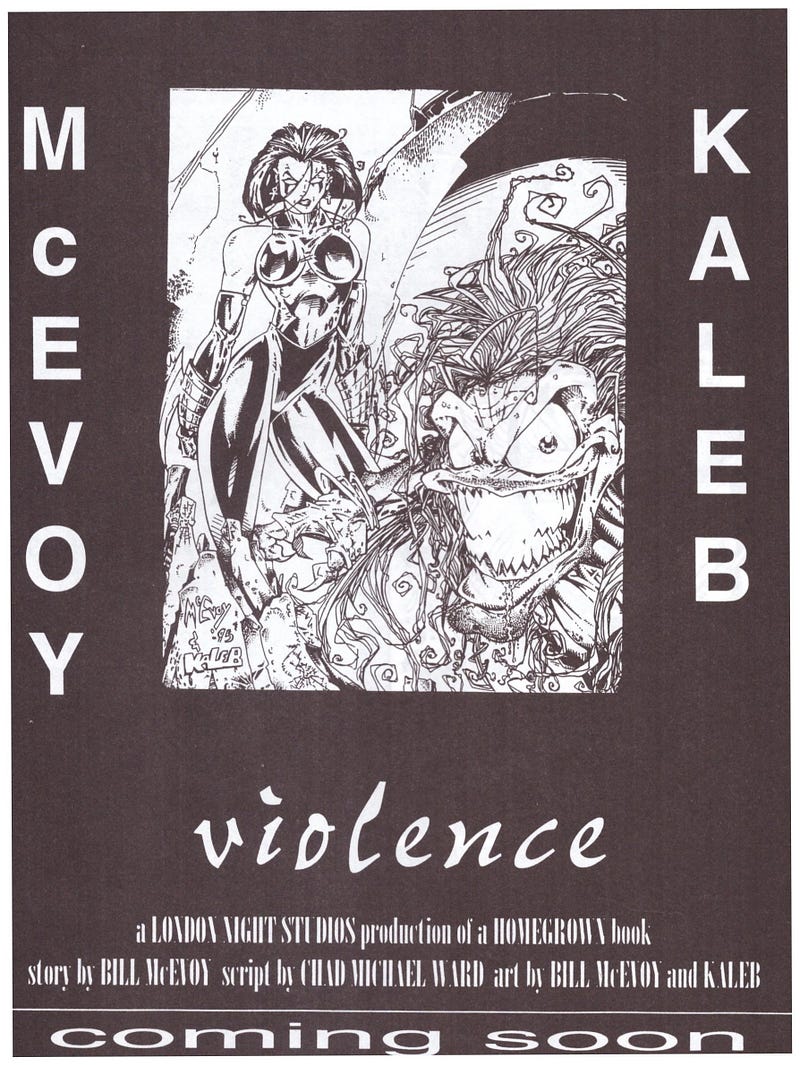
McEvoy created a universe of characters centered not around the heroes, but the villains. The Seven Plagues of Armageddon were personifications of negative forces like Violence, Anguish, Confusion, and Hate.
Despite being a new title by new creators, Violence # 1 made it into the top 200 most pre-ordered books from Diamond for June 1995. But those sales were still, unfortunately, apparently not enough and London Night never actually published the book.
Homegrown did sell a Violence ashcan in 1995, and the story also saw print in the second issue of Ward’s Mosaic. Sadly, the Amateur Creator’s Union shuttered around this time. There was never a third issue of Mosaic nor a second published chapter of Violence. But this wasn’t the last we’d see of the Armageddon universe.
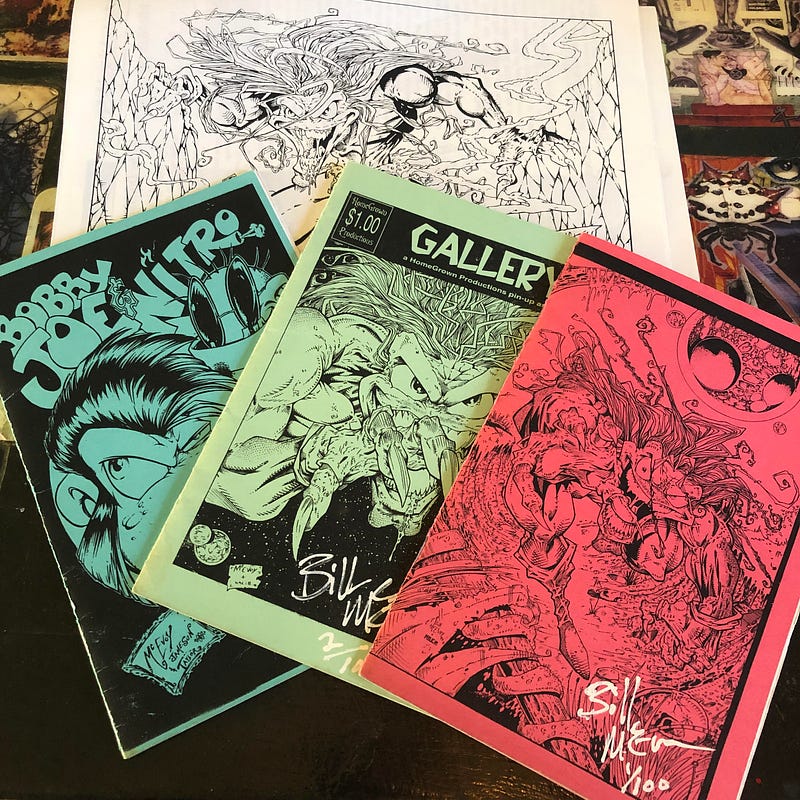
Riding the Lightning
Undeterred by the premature cancellation of Violence, McEvoy and Bustamante published an ashcan called Bobby Joe and Nitro, a sort of Tarantino parody about a pair of SoCal rockabilly lowlifes and a job gone wrong. The story featured a cameo by Nitro’s younger sister, Moxy, a junior-high school girl concerned primarily with lipgloss, gossip, and trigonometry.
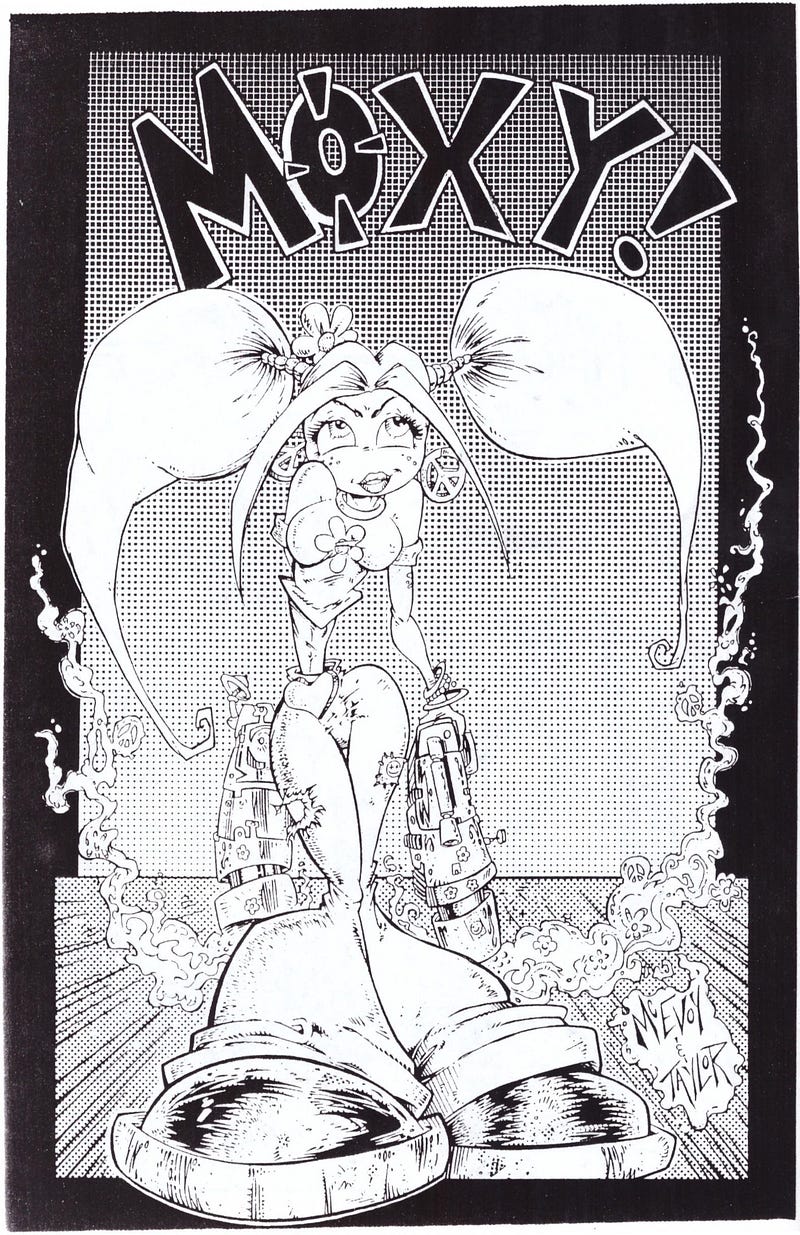
The ashcan caught the attention of Lightning Comics at San Diego ComicCon 1995, where the Homegrown Studios crew of McEvoy, Taylor, and Salstrom had a table. “Moxi was just a side character, but someone at Lightning saw a pinup of her and liked it enough that they wanted to give her a solo book,” McEvoy explains.
Lightning was mostly known at the time for their nude variant covers. This was the height of the “Bad Girl” comics craze spawned by titles Vamprilla, Shi, Razor, Dawn, and Lady Death. The comics industry was cratering, but indie Bad Girl books like Dawn and Lady Death were outselling titles by the big two. Lightning’s flagship title was the Bad Girl series Hellina, but they also published Kaniuga’s hit series CreeD, which was aesthetically similar to Bobby Joe and Nitro.
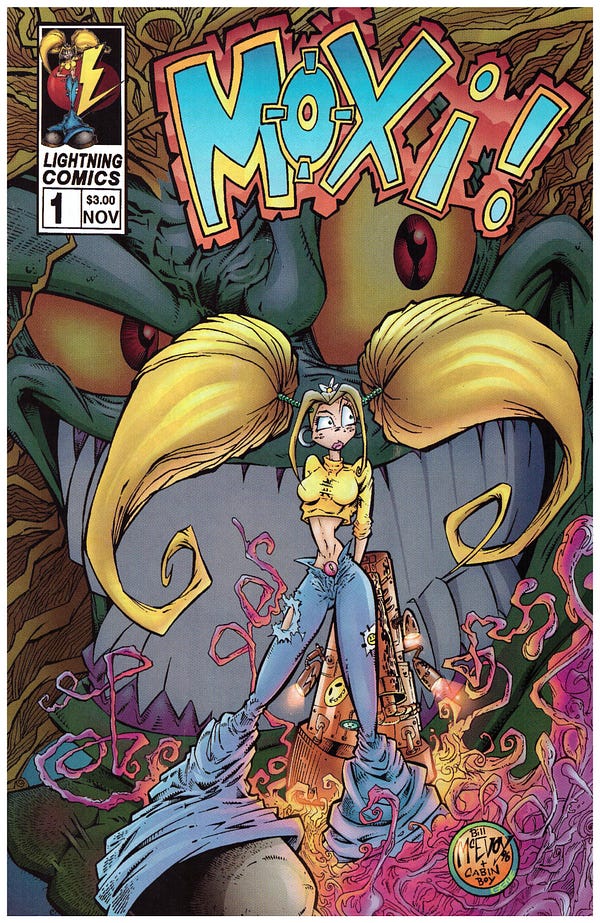
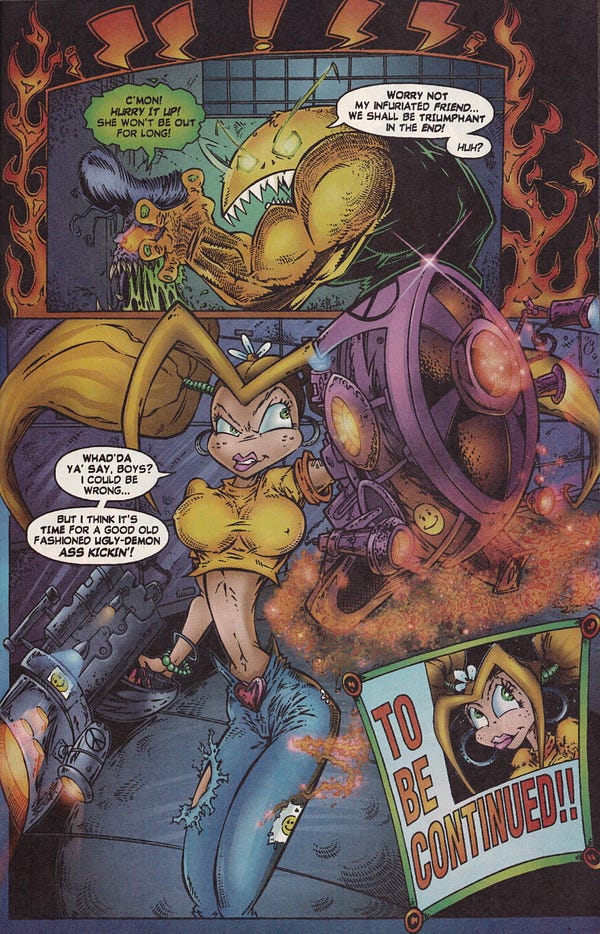
Lightning published a Moxi color special in 1996, followed by the first issue of a black and white series. McEvoy jumped the timeline forward a few years. No longer in junior high, Moxi now had her own apartment (where Bobby Joe and Nitro were hiding out) and she was a full-on badass demon hunter tracking down the Seven Plagues of Armageddon, taking on Violence, Confusion, Anguish, and the rest. A robot warrior that looked an awful lot like the main character from McEvoy’s Mosaic # 1 contribution was there as well. Lightning also published a Bobby Joe and Nitro one-shot reprinting the ashcan story.
McEvoy says Moxi actually attracted some attention from Hollywood. “We sold the rights to Disney, but nothing ever came of it,” he says. Sadly, however, comics fans and retailers paid little attention as the comics market continued to crumble. Lightning ceased publishing in 1998. Hellina and CreeD landed at Avatar Press, but Moxi never made the jump.
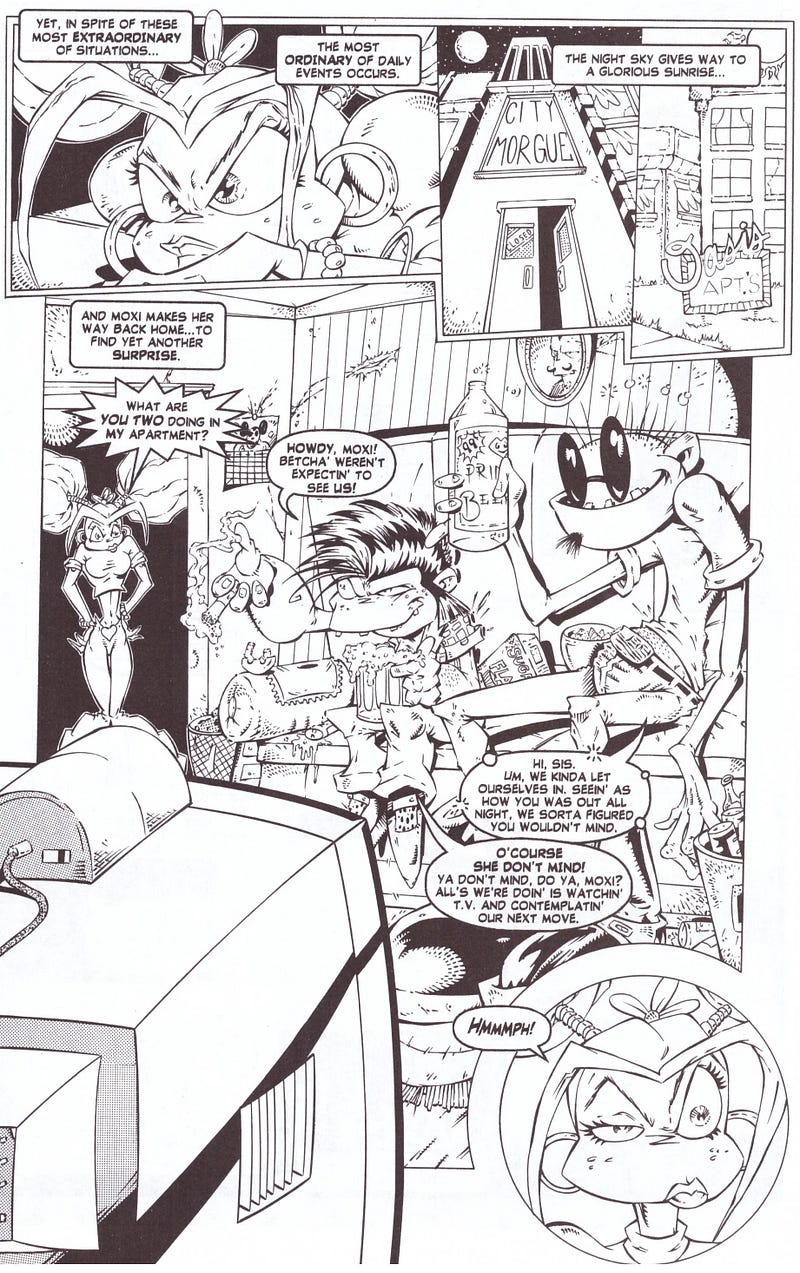
Taylor still did the occasional gig for London Night after that, but gradually stopped doing comics. “I got a call to do a full Marvel book but it was a fill-in job and they wanted it in five days so I had to say no,” he says.
“It was an odd time,” he says. “I was super unhappy and really didn’t see how good I had it. Everette took me on a couple of tours, gave me a great page rate and royalties and I was still burned out.” Taylor took a job at a video store and went to community college to study film. “In 2000 I moved to LA and started working in reality TV as a cameraman,” he says.
Salstrom’s inking career continued apace. In 1996 he provided ink assists to Batt over Marc Silvestri’s pencils on the Garth Ennis scripted Image/Top Cow smash hit The Darkness # 1. He went on to work on titles like DV8 and Gen13 Yearbook from Wildstorm, Team-X 2000 and X-Men Unlimited from Marvel, and The Titans and Young Justice at DC, often paired with Garza on pencils. In 2000 Salstrom inked the Garza penciled E.V.E. ProtoMecha # 1 from Image/Top Cow–a big hit at the time that is now largely forgotten. His comics career wound down after that. “I think he was burned out on the long hours of it and the low pay,” Taylor says. “A whole lot of Mountain Dew was consumed in the 90s.”
Never Say Die
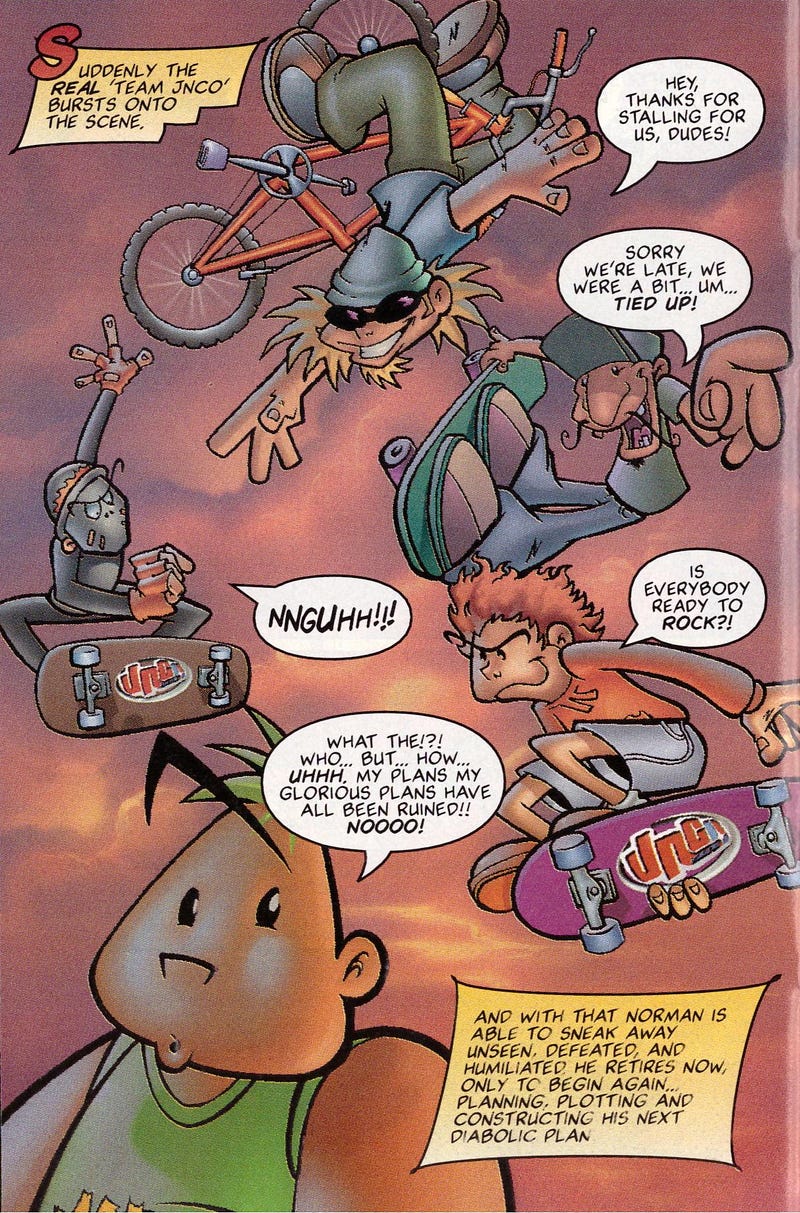
Wizard # 85 landed in my mailbox over the summer of 1998. It contained a big surprise: a mini-comic called Flamehead with McEvoy, Bustamante, and Brian Jameson in the credits. It was a promo for an apparel company called JNCO. I’d never heard of JNCO and had lost touch with McEvoy and most of the rest of the Amateur Creator’s Union before Moxi was published, so it was a mysterious artifact to me.
When I arrived for my first day of school in the fall of 1998, I found that JNCO’s tent-like jeans had enveloped the legs of practically every stoner and Korn fan at my alma mater. McEvoy also drew some of the art that was plastered to my classmates’ legs. “I drew all kinds of stuff for them, not just the Flamehead comic,” he says.
JNCO jeans were never my thing, and the fad was short-lived. After peak sales in 1998, sales halved in 1999. But I was a little proud and excited to see McEvoy’s work in such an unexpected context.
In 2000, Taylor, now working full-time in the film and video business, found time to write and ink a comic called Dollparts, published by Sirius Entertainment. The book was created and penciled by Shawn Pacheco, who had provided a pinup in the Lightning version of Bobby Joe and Nitro. “Shawn was also always around our crew,” Taylor says.
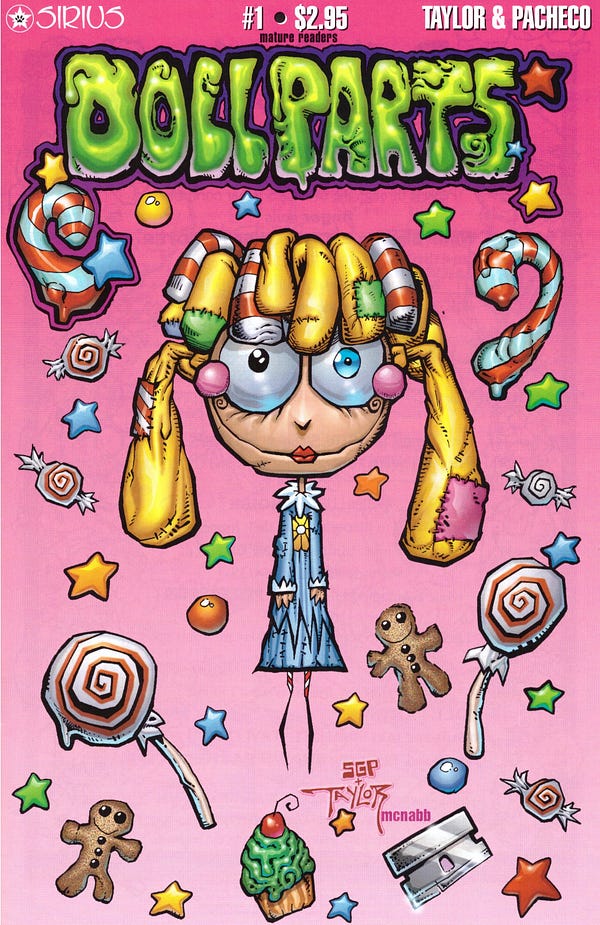
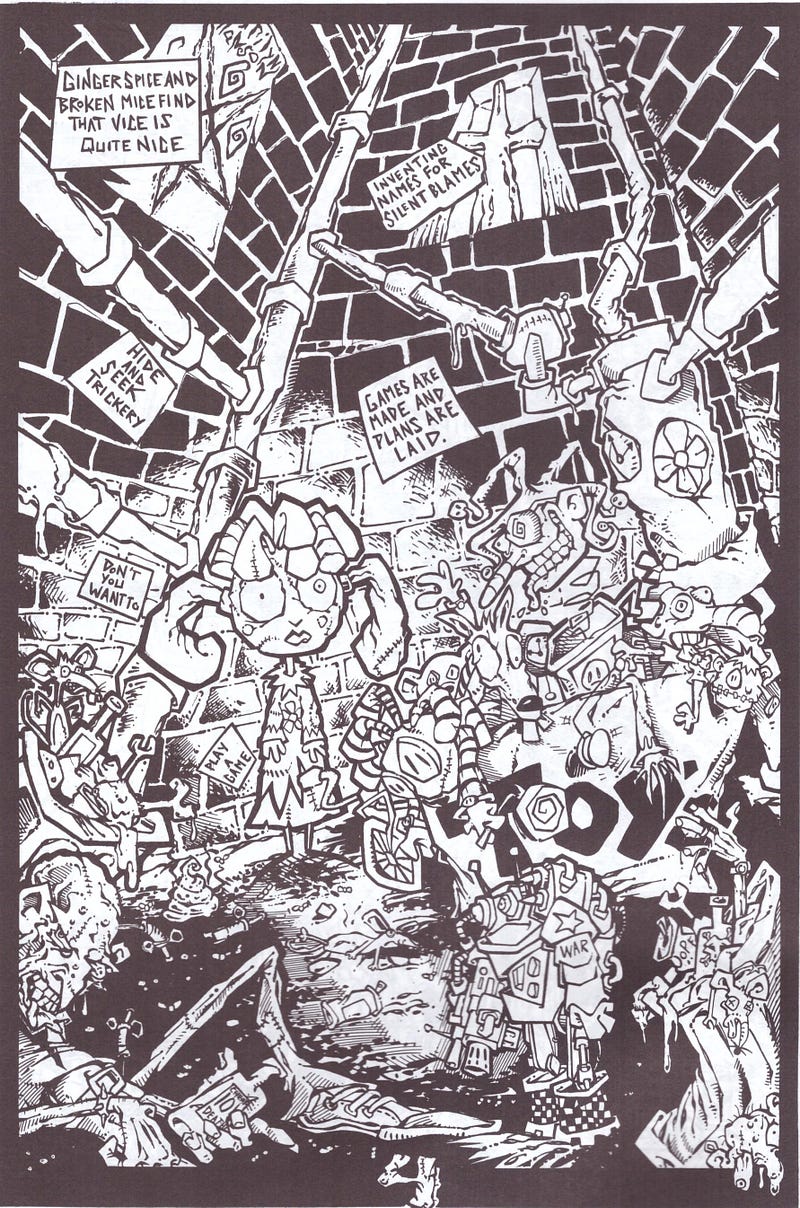
Sirius had some success with Oh My Goth!, and Jhonen Vasquez’s SLG comics were a big deal at the time. So it’s safe to say that goth comics were a thing at the time. Doll Parts sold 2,101 copies, just enough to put it in the Top 300 comics for October, 2000. But it was the only issue published.
Taylor put most of his effort into film and animation, working his way up to directing and producing. He and McEvoy teamed up once again in 2009 for the animated video for Twiztid’s “Buckets Of Blood” in 2009.
Taylor now runs a small post-production house that offers services like editing, VFX, and animation compositing. McEvoy and Bustamante still work in the apparel industry today. They’ve lost touch with Salstrom.
Taylor is also working on a feature film he’s been self-financing, and McEvoy contributed some concept designs to that. Plus Taylor has been working on a weird west comic for the past five years and is roughly halfway through.
McEvoy is plotting a return to the “Seven Plagues of Armageddon” concept with an all new Moxi story, possibly in collaboration with Taylor. “We’ll find out she failed to stop the demons the first time around,” McEvoy explains.
Given how many other 90s artists have made returns to comics through the wonders of crowd-funding, it’s far too early to count the Homegrown boys out.
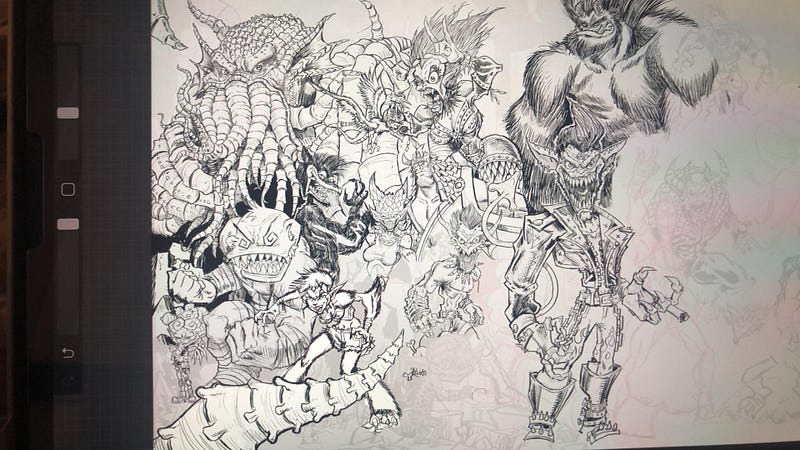
More on the Amateur Creator’s Union:
Late updates
2/5/2024: Bill McEvoy was one of many artists who contributed to the TMNT bootleg TMNT jam comic Sewer Boyz (no relation to your friendly neighborhood Sewer Mutant) assembled by Erwin Papa.
